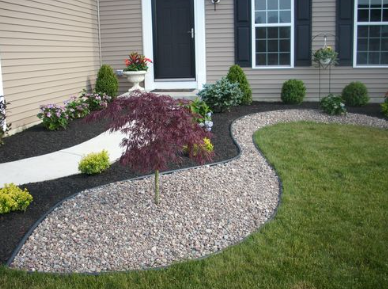Landscaping on a budget requires creativity, resourcefulness, and careful planning. Here are some tips to help you create an attractive outdoor space without breaking the bank:
- Set a Budget:
- Determine how much you’re willing to spend on your landscaping project. This will help you prioritize your expenses and avoid overspending.
- Create a Plan:
- Develop a detailed plan for your landscaping project. Identify key areas, prioritize features, and outline the materials needed. This will help you stay focused on your budget.
- DIY Projects:
- Consider taking on do-it-yourself (DIY) projects. Building your own flower beds, garden structures, or pathways can save you money. There are plenty of online tutorials and resources to guide you.
- Reuse and Repurpose:
- Look for items you already have that can be repurposed for landscaping, such as old furniture, containers, or decorative pieces. You might also find materials like rocks or bricks on your property that can be used for pathways or borders.
- Native Plants:
- Choose native plants that are well-suited to your climate and soil conditions. Native plants are often more resilient, require less maintenance, and can be less expensive than exotic varieties.
- Buy in Bulk:
- Purchase materials like mulch, gravel, or plants in bulk. This can often be more cost-effective than buying smaller quantities.
- Propagate Plants:
- Instead of buying fully grown plants, consider propagating plants from seeds, cuttings, or divisions. This takes more time, but it’s a budget-friendly way to increase the number of plants in your garden.
- Seasonal Sales:
- Take advantage of end-of-season sales at nurseries and home improvement stores. You can find discounted plants and landscaping materials as retailers make room for new inventory.
- Local Community Resources:
- Check if there are community gardens, plant swaps, or local gardening clubs where you can exchange or acquire plants inexpensively.
- Mulch for Aesthetic Appeal:
- Mulch is an affordable way to improve the appearance of your garden while also providing numerous benefits such as moisture retention and weed control.
- Focus on Low-Maintenance Design:
- Choose a low-maintenance design that minimizes the need for ongoing expenses. This could involve selecting plants that require less water, choosing durable materials, and planning for easy maintenance.
- Sustainable Practices:
- Implement sustainable practices, such as rainwater harvesting, to reduce water bills. This can also be a cost-effective way to maintain your landscaping.
- Patience:
- Landscaping on a budget often involves a bit of patience. You may need to wait for plants to grow or for sales to occur. Take your time and enjoy the process.
By combining these strategies, you can create a beautiful outdoor space without spending a fortune. Remember that a well-planned and maintained garden can be just as attractive as a high-budget one.

